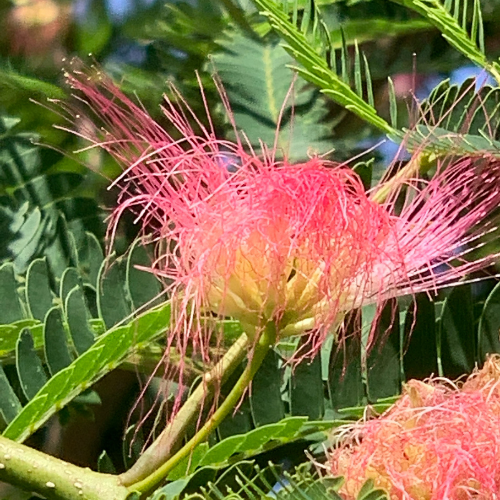
Every summer around the 4th of July Holiday, the landscape explodes with the illumination of the bright pink, powderpuff blooms of Mimosa tree. The stunning beauty of this tree is not only very short lived, but comes with alot of warnings. Simply Google “Mimosa Tree” and you will find more “Don’ts” than “Do’s”.
Although very appealing with its fern-like branches that seem to fan the yard during the light summer breeze and certainly the pink blooms in July, this species in most states has been classified as an invasive species. How can something so beautiful be a problem? It is true that the fragrant and delicate, fluffy pink flowers are a magnet to hummingbirds, bees and butterflies, and the tree adapts to most any soil type and moisture level and tolerates everything from high alkaline conditions and even thrives in levels of high salinity. Its tiered branches form an umbrella-shaped canopy that would be an added addition to any well manicured backyard.
However, while the Mimosa is a stunner to look at, this species behaves very poorly as an obedient element to the property. It is a prolific seeder and grows vigorously. The Mimosa quickly spreads into natural environments, quickly crowding out native plants and the animals that depend on them for food and habitat, thus earning them the “invasive” tag. They are also very messy, littering spent flowers, seed pods and sap from the foliage, which certainly leads to additional clean up efforts if they are a part of your property.
So, I suppose, much like life….. The more beauty something has, the harder it is to deal with.
Contributed by:
DonAngelo










